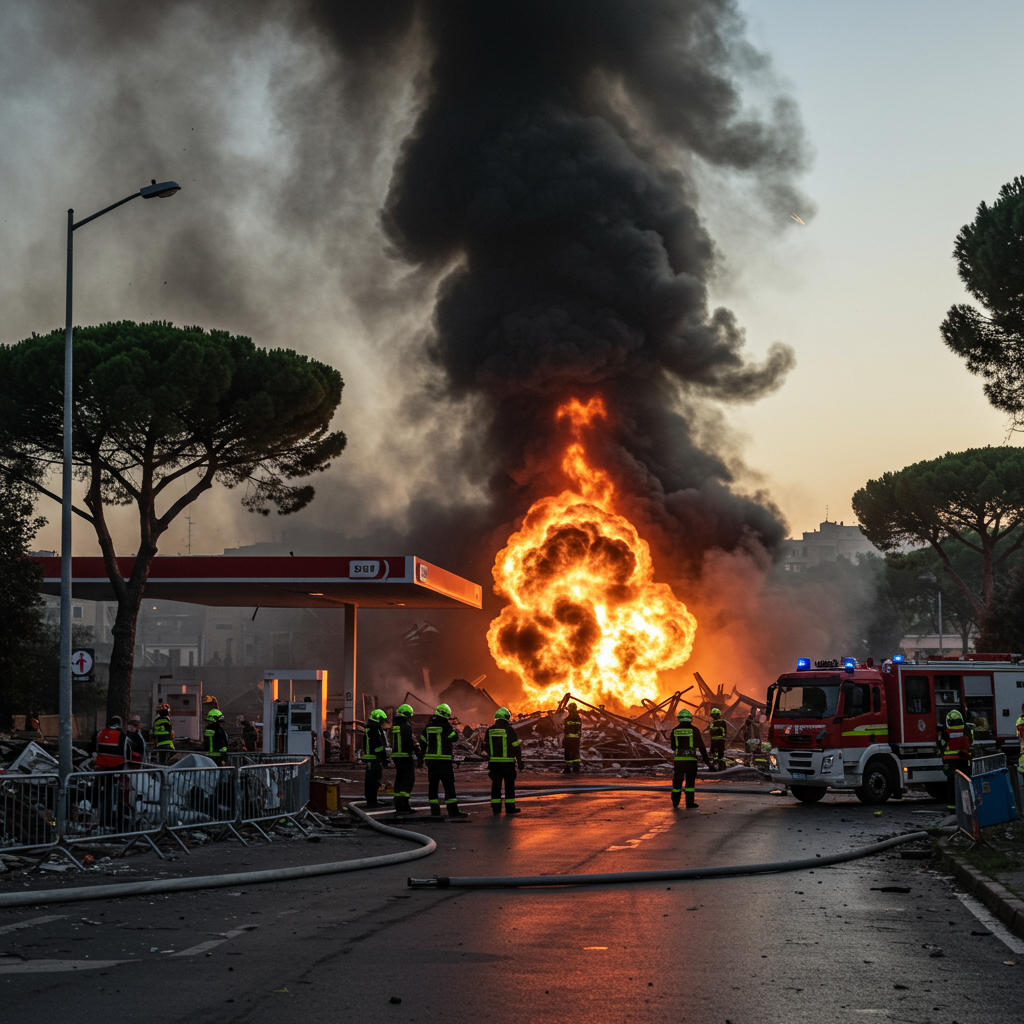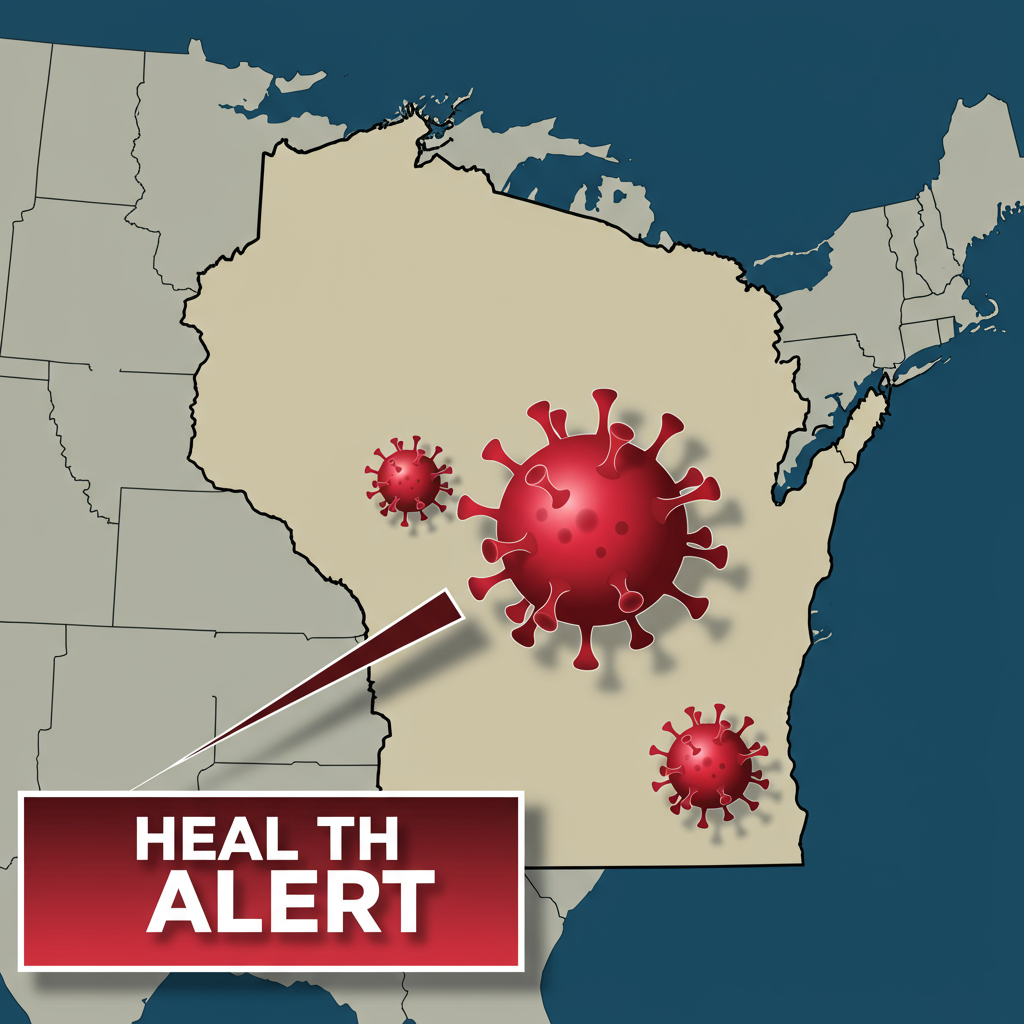A powerful explosion ripped through a Rome gas station early Friday morning, injuring at least 45 people and causing widespread damage. The incident, centered in the Prenestino district, sent a massive fireball and thick black smoke into the sky, shaking buildings and raising fears across the Italian capital. Emergency services, already on the scene following an initial alert, were significantly impacted, with many first responders among the injured. Investigations are underway to determine the exact cause of the catastrophic event.
Catastrophic blast Strikes Rome Neighborhood
The tragic incident unfolded around 8 a.m. local time on Friday, July 4, 2025. It occurred at a gas station located on Via Gordiani in Rome’s eastern Prenestino neighborhood, also known as Prenestino Labicano. The facility handled both traditional petrol and liquified natural gas (LNG).
Reports indicate the chain of events began with an initial, smaller blast or fire. This initial alert drew emergency services to the scene. However, a much larger, devastating explosion followed shortly thereafter, catching many responders and nearby residents in its path. Eyewitnesses described the second blast as “hellish,” producing a towering fireball that resembled a “fiery mushroom.”
Sequence of Events Leading to the Explosion
Preliminary findings suggest the disaster was triggered during refuelling operations involving a tanker truck. It is believed that the tanker truck may have struck a pipe or that a fuel pump detached from the truck. This collision or detachment likely resulted in a significant gas leak.
The leaked gas subsequently ignited, causing an initial fire or smaller blast. While emergency crews were arriving and beginning evacuation procedures, the larger volume of leaked LNG fuel appears to have built up. This led to a Boiling Liquid Expanding Vapor Explosion (BLEVE), a particularly destructive type of blast where rapidly expanding vapor from a superheated liquid fuel creates an effect similar to a bomb detonating. The regional fire department director specifically referred to the explosion as a BLEVE.
Widespread Damage and Heroic Response
The force of the massive explosion was immense. It caused substantial damage not only to the gas station itself but also to numerous surrounding structures. Nearby buildings, including an adjacent sports center and a judicial depot located behind the station, sustained significant structural harm. Windows were shattered, vehicles were incinerated, and the area was left looking like a “war zone,” according to one Carabinieri officer.
Despite the perilous conditions, emergency service personnel demonstrated immense bravery. Firefighting crews immediately worked to extinguish the intense flames that consumed the station and threatened adjacent areas. Police officers, Carabinieri, firefighters, and paramedics were actively involved in rescue and evacuation efforts before and after the larger blast.
Rome Mayor Roberto Gualtieri visited the devastated site. He praised the swift actions of emergency teams. The mayor emphasized that these teams began evacuating people from nearby buildings, such as the sports center, after the initial smaller incident. This critical timing prevented a potentially “much more serious tragedy.”
Casualty Count and Severity of Injuries
The Rome gas station explosion resulted in a significant number of casualties. A total of at least 45 individuals sustained injuries. The injured included both civilians and a large contingent of emergency service workers.
Among the 45 injured, reports confirm that 21 were first responders. This group included 12 police officers, one member of the Carabinieri, six firefighters, and three paramedics or emergency rescuers.
The severity of the injuries varied greatly. At least five individuals required hospitalization. Two men were reported to be in critical, life-threatening condition, suffering from major burns; one was rescued from a burning car. Additionally, six other injured persons were classified as “code red,” indicating the highest level of medical emergency according to the Italian healthcare system’s classification system.
Context and Potential Consequences
The timing of the explosion proved to be a critical factor in limiting casualties. The blast occurred relatively early on a Friday morning. The head of the adjacent sports center highlighted the narrow escape. He noted that around 60 children were scheduled to arrive for a summer camp later that morning, and approximately 120 people had booked the swimming pool. Had the larger explosion happened even an hour later, he stated, it “would have been a massacre, a catastrophe.”
The incident also occurred amidst a severe heatwave affecting Rome. Authorities advised residents near the blast site to leave the area as a precaution. They also recommended keeping windows closed and avoiding external air conditioning units due to lingering smoke and potential air quality concerns. Medical tents were quickly set up on-site to triage and treat the injured.
The investigation into the precise cause of the Rome gas station explosion is ongoing. Local fire department and police investigators are examining the sequence of events and the suspected mechanical failure involving the tanker truck and the fuel transfer system. Ensuring strict safety protocols at fuel handling facilities, particularly those dealing with volatile substances like LNG, remains paramount to preventing such devastating accidents.
Official Reactions and Community Support
Italy’s Prime Minister, Giorgia Meloni, publicly expressed her concern following the explosion. She conveyed her sympathy to all those affected. This included specifically mentioning law enforcement, firefighters, and health workers injured in the blast. She also thanked the emergency teams for their rapid and courageous rescue and safety operations.
Pope Leo XIV also offered prayers for the victims and everyone impacted by the tragedy in the Prenestino Labicano district. He stated he was following the developments of the tragic event with deep concern. The quick response from political and religious leaders underscored the severity of the incident and its impact on the community.
The sheer scale of the blast and the significant number of injured persons, especially among dedicated emergency responders, highlights the inherent risks faced by those who rush towards danger to help others. The Rome gas station explosion serves as a stark reminder of the potential hazards associated with fuel storage and transfer operations in urban environments.
Frequently Asked Questions
What triggered the powerful Rome gas station explosion?
Investigations are ongoing, but preliminary reports suggest the explosion was triggered by a gas leak during refuelling operations. It is believed a tanker truck may have struck a pipe or a fuel pump detached, causing liquified natural gas (LNG) to leak. This leak then ignited, leading to an initial fire or smaller blast, followed by a much larger Boiling Liquid Expanding Vapor Explosion (BLEVE) of the accumulated gas vapor.
How many people were injured in the Rome gas station blast, and who was affected?
At least 45 people were injured in the explosion. The casualties included both local residents and a significant number of emergency service personnel who had responded to an initial incident alert. Specifically, 21 first responders were among the injured, including police officers, Carabinieri, firefighters, and paramedics. Two individuals sustained life-threatening critical injuries requiring hospitalization, and six others were classified as ‘code red’.
What were the immediate effects and response at the Rome explosion site?
The explosion caused extensive devastation, destroying the gas station and severely damaging nearby buildings like a sports center and judicial depot. A massive fireball and thick black smoke were visible across Rome. Emergency services were already present after an initial incident and immediately worked to fight the intense fire, evacuate the area (including a nearby children’s summer camp), and rescue individuals. Authorities quickly set up medical tents and advised nearby residents on safety precautions amidst the heatwave.
Conclusion
The Rome gas station explosion on Friday, July 4, 2025, was a devastating event that injured dozens and caused significant damage. While the exact cause remains under investigation, initial findings point to a gas leak during refuelling activities culminating in a massive BLEVE. The high number of casualties, including many dedicated emergency responders, underscores the dangers inherent in such incidents. The timely actions of these brave individuals in evacuating the area are credited with preventing an even greater loss of life. As the community recovers, focus remains on supporting the injured and understanding the precise sequence of events to enhance safety protocols for similar facilities in the future.




